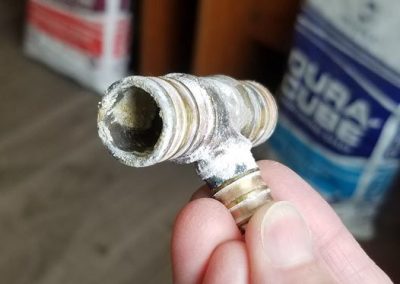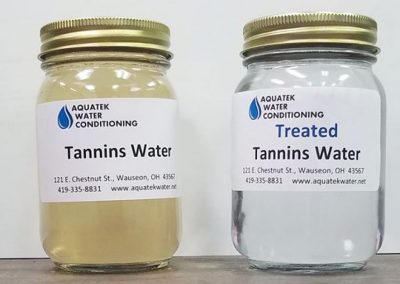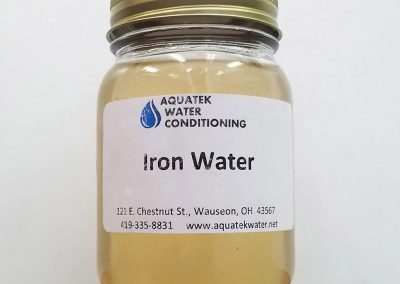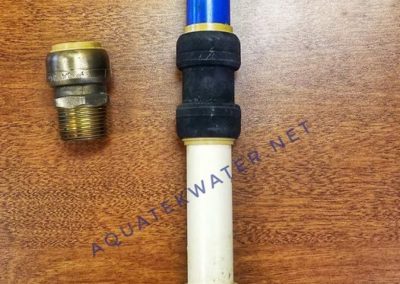While we all would love to find nuggets of gold falling into our glass when turning on the kitchen faucet each morning, unfortunately, that isn’t a reality. Learn what can really be in our water!
Here in Northwest Ohio and Southeastern Michigan, water quality and water quantity varies widely. In some areas water is plentiful with deep flowing wells, while other areas have little to no water to tap into. Some regions have high iron content, while others have sulfur. And oftentimes, one homeowner’s water can have a completely different makeup than their nearby neighbor.
Hardness
Calcium and magnesium can build up causing hardness in water. It oftentimes leaves residue on plumbing and fixtures, as well as on dishes and glassware.
Tannins
Tannins water are a natural organic material caused by decaying vegetation and peaty soil. You can see the yellow color of the untreated Tannins water next to the treated Tannins water in this photo.
Hardness
Water hardness is a common quality of water found in this region. Hard water contains dissolve compounds of calcium and magnesium, and sometimes, other metallic elements. This is what causes mineral deposits on dishes and glassware. It can cause soap to not lather. It can also cause extra work to remove soap crud on bathtubs and shower stalls, scale build up in pipes, sinks, tubs, faucets, and appliances.
Iron
Iron is also commonly found in water throughout this area. Most notably, it can cause staining in sinks, toilets, tubs, showers, and clothing. It can also be corrosive to pipes and fixtures.
Sulfur
Sulfur is a gas found in some water throughout our region that has a very distinct smell, and taste, comparable to rotten eggs. Untreated sulfur water can come out of the faucet black and can cause staining to sinks, toilets and clothing. It can be very damaging to plumbing and non-water using appliances such as TV’s, Microwaves, HVAC systems and more.
No Water, Low Yield Wells and Untreatable Water
No water, low yield wells, high sulfur content and salt wells can wreak havoc in some areas throughout the region. As a viable alternative, many utilize their pond for water into their home and barn. Pond water is filtrated through Pond Water Treatment Systems, approved by the Ohio Department of Health, and provide viable and safe water into the home.
Tannins
Also seen in our area are Tannins. Tannins are a natural organic material caused by decaying vegetation and peaty soil. This can cause a faint yellow to tea-like color in your water and can lead to staining on fixtures and clothing when laundered.
Municipal Water
Households and businesses who are in cities, towns and villages typically have municipal water that is treated and distributed by water treatment plants. Generally speaking, municipal water is safe to drink, bathe in and launder. However, many of our customers like having the piece of mind, and extra protection of having residential water treatment equipment installed that improves the quality and taste of their water.





0 Comments
Trackbacks/Pingbacks